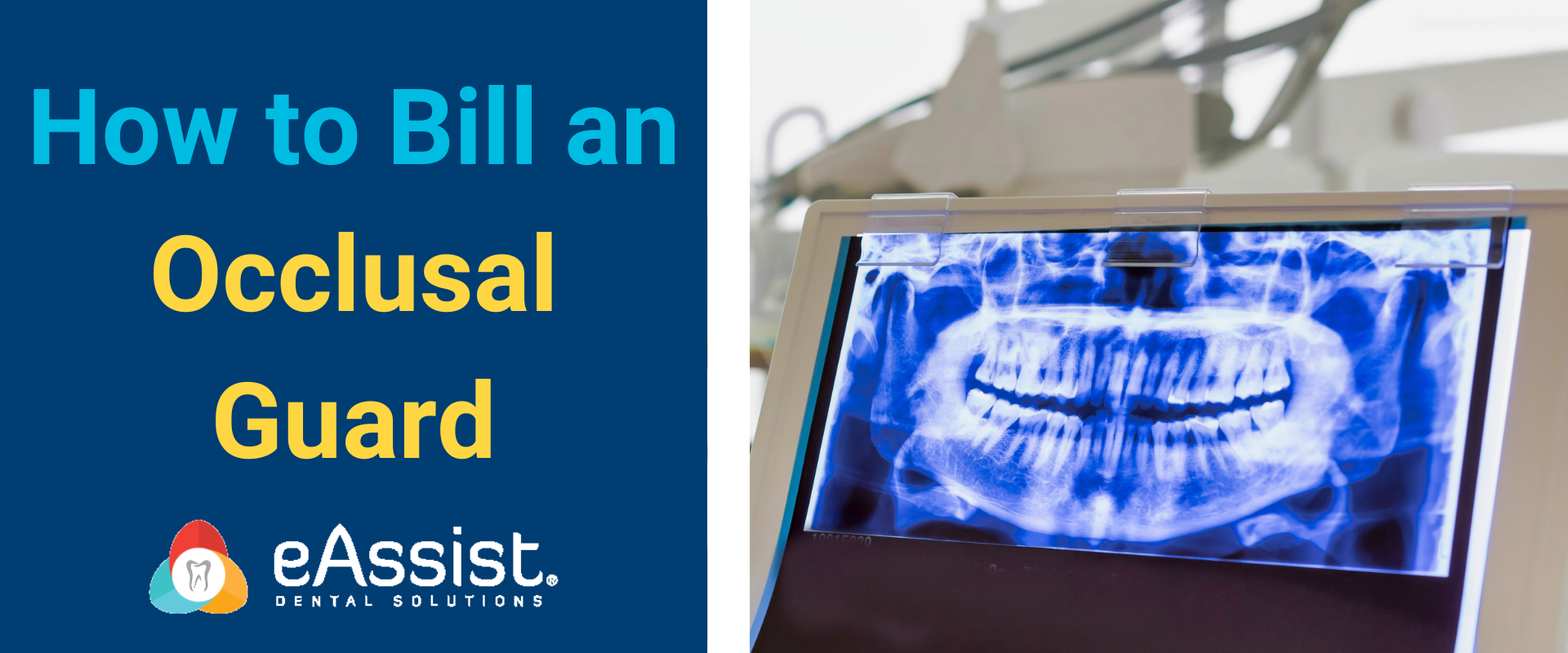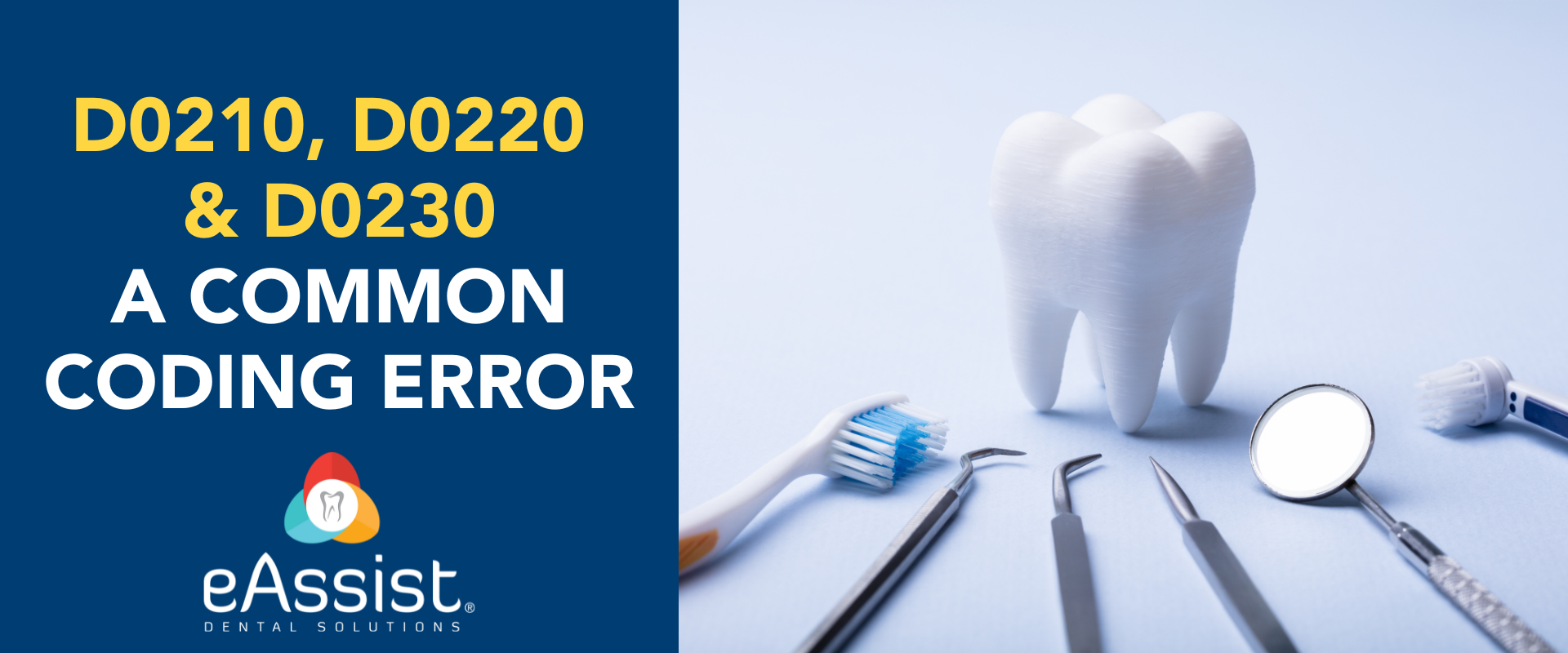Dental insurance claims processing involves a host of standard procedures that must be followed properly in order to ensure full reimbursement. Many dental offices do not document as thoroughly as they should. No matter the reason — and usually the reason is not having enough time — this can become a major revenue cycle management roadblock. Insurance providers are constantly changing their mandatory guidelines for reimbursement, making accurate clinical documentation even more critical. Do you feel that your current level of dental clinical documentation is helping or hurting your insurance reimbursement and total collections? If your clinical notes aren’t quite up to par, or maybe need just a little bit of refining, we have several tips to help you.
How does dental insurance claims processing work?
While claim creation and submission itself may seem simple at first glance, the six-step process shown here explains the typical timeline of reimbursement, rejection, or denial:
- Your patient visits a dental health care provider and receives treatment
- Claims processing staff then submit a claim to the patient’s dental insurance provider for reimbursement of the service provided
- The insurance provider receives the claim and verifies the patient’s eligibility for coverage, your credentials, and the procedure’s appropriateness to these parameters
- The insurance provider then reviews the claim to determine if it is covered under the patient’s dental insurance plan
- If the claim is approved, the provider reimburses you a particular amount based on the terms of the patient’s policy benefits
- If the claim is denied, you become responsible for billing the patient for the entire cost of the service
Of course, each step in this process is crucial to every dentist’s goal: maximize reimbursement by increasing collections through clean, consistent, and accurate claim submission. Without every cog in the machine working in tandem, your chances of collection can drop drastically. Fortunately, there are a number of ways to better your chances at consistent reimbursement without having to extend your entire office staff to this singular goal.
How are dental claims processed?
For a dental insurance provider, the most important goal to ensure that each claim contains an effective and accurate narrative documentation that fully explains the necessity of reimbursement. Without this, claims are easily rejected or denied on the basis of inaccuracy or lack of coverage. Some preventative measures include:
- Creating a catalog of your most common claim narratives to use as a resource
- Staying up to date with coding changes and reimbursement requirements
- Outsourcing insurance verification to stay in the know about patient benefit maximums
Practice Booster offers an effective two-in-one solution of the most recent CDT code changes as well as a narrative deep dive into the most effective types of clinical documentation to help increase collections. There’s never been a better way to keep up with dental insurance claims processing than by utilizing the newest tools and guides that help your practice succeed.
Comprehensive dental clinical documentation
Good, comprehensive clinical notes are crucial to sending clean claims. And how do you keep anything in life clean? SOAP, of course! SOAP is an easy-to-remember acronym for writing dental clinical documentation. The goal for following this acronym is to make sure all of the necessary information is documented in the clinical note that is needed to support the claim for all procedures performed — and to be able to correctly appeal the claim, if necessary. SOAP stands for:
- Subjective — the patient’s chief complaint as communicated by the patient, history of present illness, location, and severity
- Objective — vital signs, observable clinical examination findings
- Assessment — diagnosis, reasoning/evidence behind the diagnosis, if applicable
- Plan — how the provider will treat the patient’s concern now and in future treatments as needed
What is the first step in dental insurance claims processing?
Did you know that comprehensive clinical documentation starts with the patient’s initial phone call to the office? It is important to be clear in your questions to the patient to understand what the patient’s dental needs and expectations are for their appointment. Any time a patient is in the office — or on the phone — it is recommended to record patient statements word-for-word in the clinical notes, whether they are related to chief complaints, treatment, or financial arrangements. These will help in crafting a more complete and detailed narrative.
Narratives and clinical notes are now one in the same
The days of writing novels to get claims paid are over! Many payors are now only accepting a narrative to document medical necessity if it comes in the form of clinical notes taken directly from the patient’s dental clinical documentation. This means that good, comprehensive clinical notes are now necessary to get claims paid.
The patient’s clinical documentation is a legal record of the patient’s dental health in your practice, so the hard truth is that if it isn’t documented, it didn’t happen. While this is helpful in terms of no longer needing to write an independent summary of the patient’s visit to get a claim paid, it can be detrimental to your practice’s cash flow if your dental clinical documentation is lacking the information required for maximum reimbursement from the payor.
“Open up and say cheese!”
We’ve all heard the phrase “a picture is worth 1000 words”. Intraoral photos are quick and easy pieces to the insurance puzzle that many dental practices don’t include. Not only do they help increase case acceptance — because a patient can see what you see — they also maximize reimbursement from payors when they can clearly see why the treatment was performed. Oftentimes, what can’t be observed clinically can’t be seen on a radiograph. Intraoral photos can be the determining factor in whether or not you get full reimbursement for the services performed. Remember that if it’s not documented, it didn’t happen. Photos are your tangible proof of medical necessity and thus requirement for reimbursement.
Know when (and how) to appeal
Approximately 33% of denied claims are appealed for reimbursement, which means that potentially thousands of dollars in revenue is being left on the table. Then one of two things happen:
- A write-off is done, or
- A statement is sent to the patient
This creates frustration for everyone and can cause patients to distrust both your processes and team. Payors send copies of EOBs to the subscriber, which means patients can see if a service is denied and why. Does your designated dental biller know the difference between rejected, disallowed, and denied claims? This is the first step when deciding whether an appeal is necessary or if there is something else needed for future claim submission.
Troubleshooting dental insurance claims processing
Of course, in spite of our best intentions, we do need to be mindful of the times when insurance providers bring back a rejected or denied claim, or when we have missed the mark in establishing an accurate benchmark for our patient’s benefit limits. Here are some of the most common processing errors and their solutions:
Rejected claim
A rejected claim is one that is kicked back because there is something on the claim form that can’t be processed. The claim needs to be reviewed for accuracy, corrected, and resubmitted. Rejected claims are avoidable roadblocks to timely reimbursement and can be easily resolved with complete and accurate insurance verifications.
Disallowed procedure
When a procedure is disallowed, the payor has determined that it doesn’t qualify for reimbursement per the designated plan. Disallowed procedures are not billable to the patient and will need to be written off. Explanations of benefit (EOBs) that state services rendered are disallowed procedures can be very frustrating for both the provider and the patient if they are unexpected.
Denied claim
When a claim is denied, the payor has determined that the claim does not qualify for reimbursement and the reason will be stated in the explanation of benefits (EOB). If the claim is denied because of missing information or filing errors, that is a reason to appeal!
Have outsourced dental billing experts on your team to help
Our teams have the incredibly difficult task of balancing patient care with a long list of daily tasks needed to ensure consistent cash flow. Insurance claims processing is getting more complex and time-consuming, taking hours upon hours of time to chase down the information needed to ensure reimbursement from the payor. These hours should be spent on more important areas such: treatment presentation, financial arrangements, scheduling, local marketing, and more.
Put your dental insurance claims processing on autopilot
The solution is to outsource your claim processes to dental industry experts that know the ins and outs of insurance payors and their requirements. This allows your in-house team to focus on what truly grows the practice, while your cash flow remains consistent. Whether you have a smaller local practice or are one of many, eAssist Dental Solutions offers you access to the nation’s leading dental billing platform with the experts you need to keep revenue cycle management consistent, dental billing processes streamlined, and your team focused and unburdened. It’s easy to learn more by scheduling a chat today.












Lucinda Lignell
Sending this info directly to the office I do eAssist Dental Billing for. I fight tooth and nail for every treatment to be paid fairly, but without the documentation, my fight is curtailed.